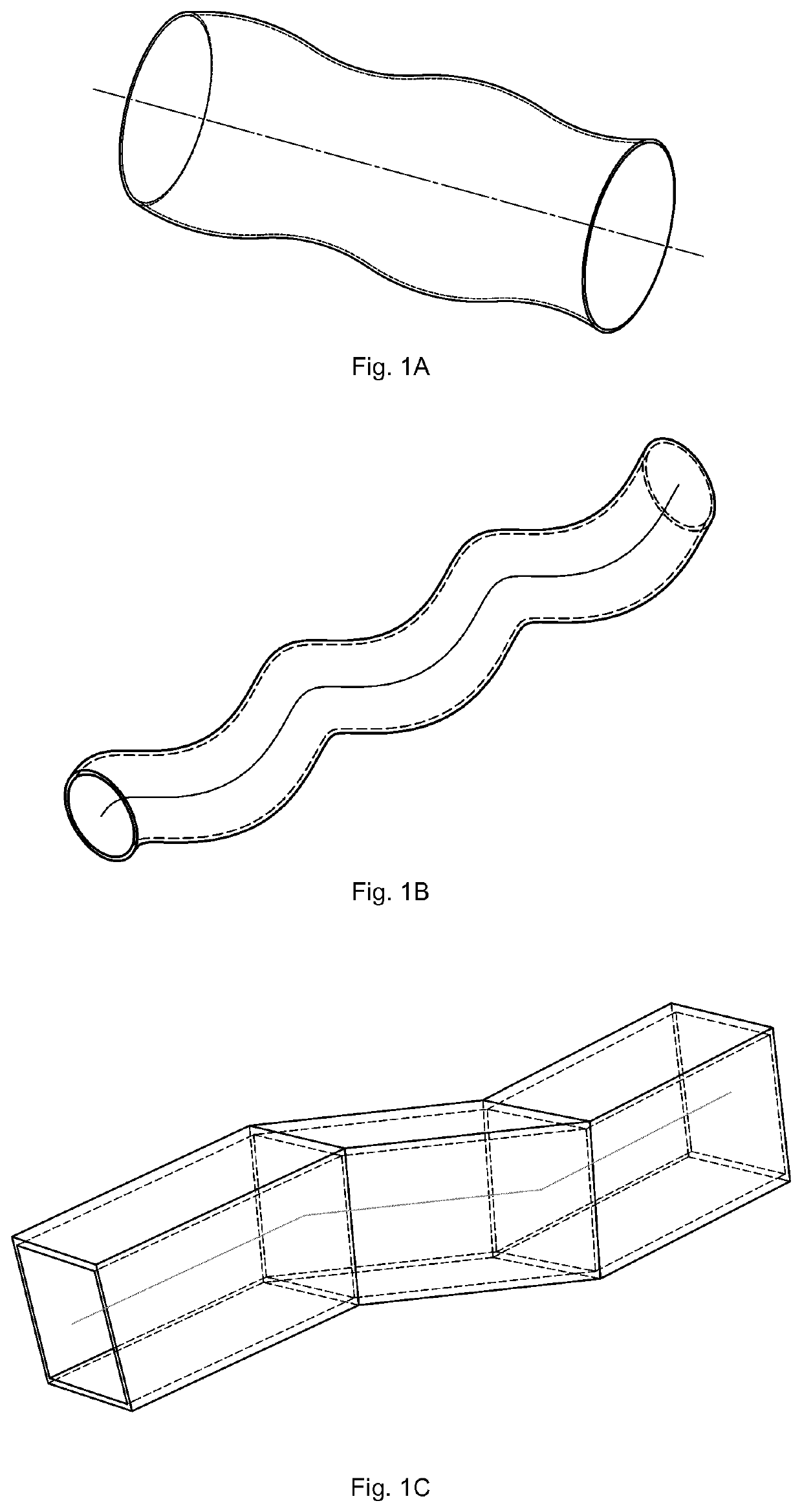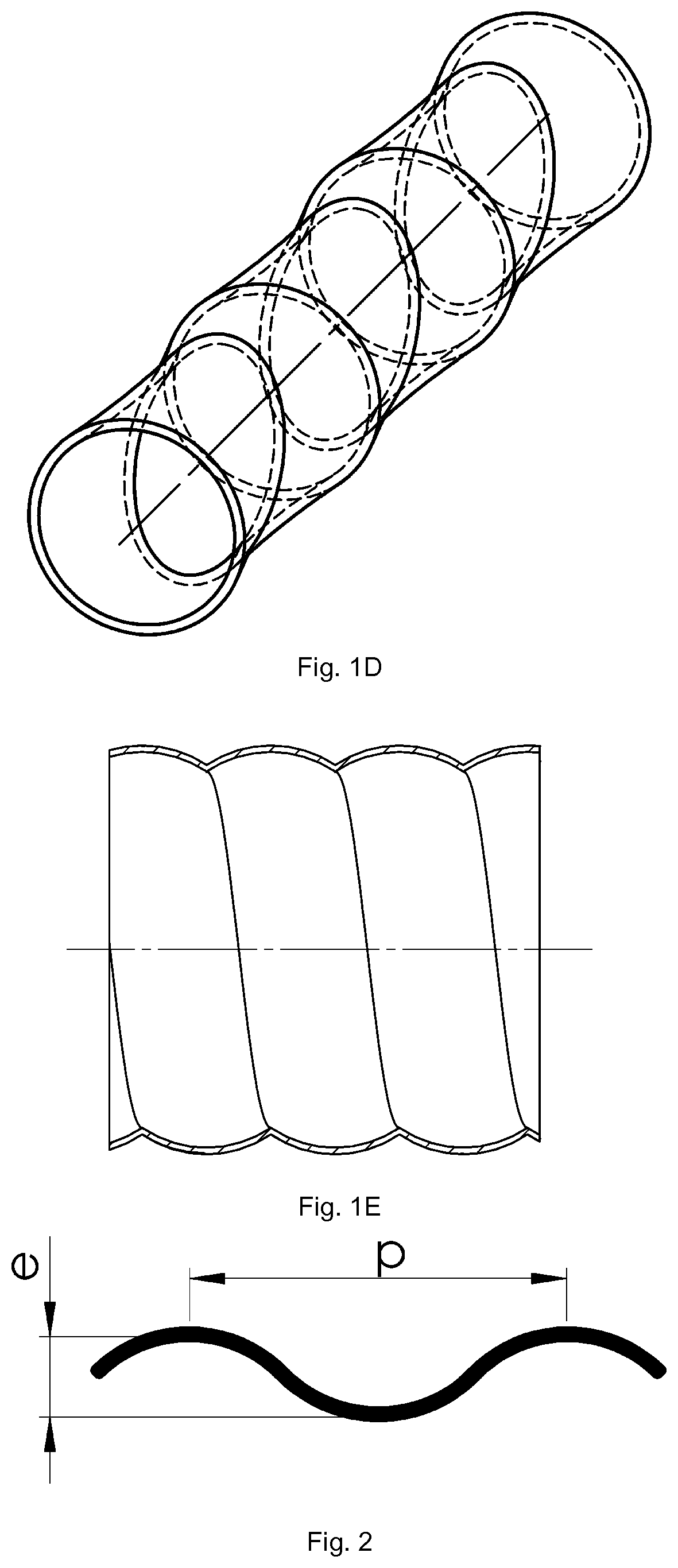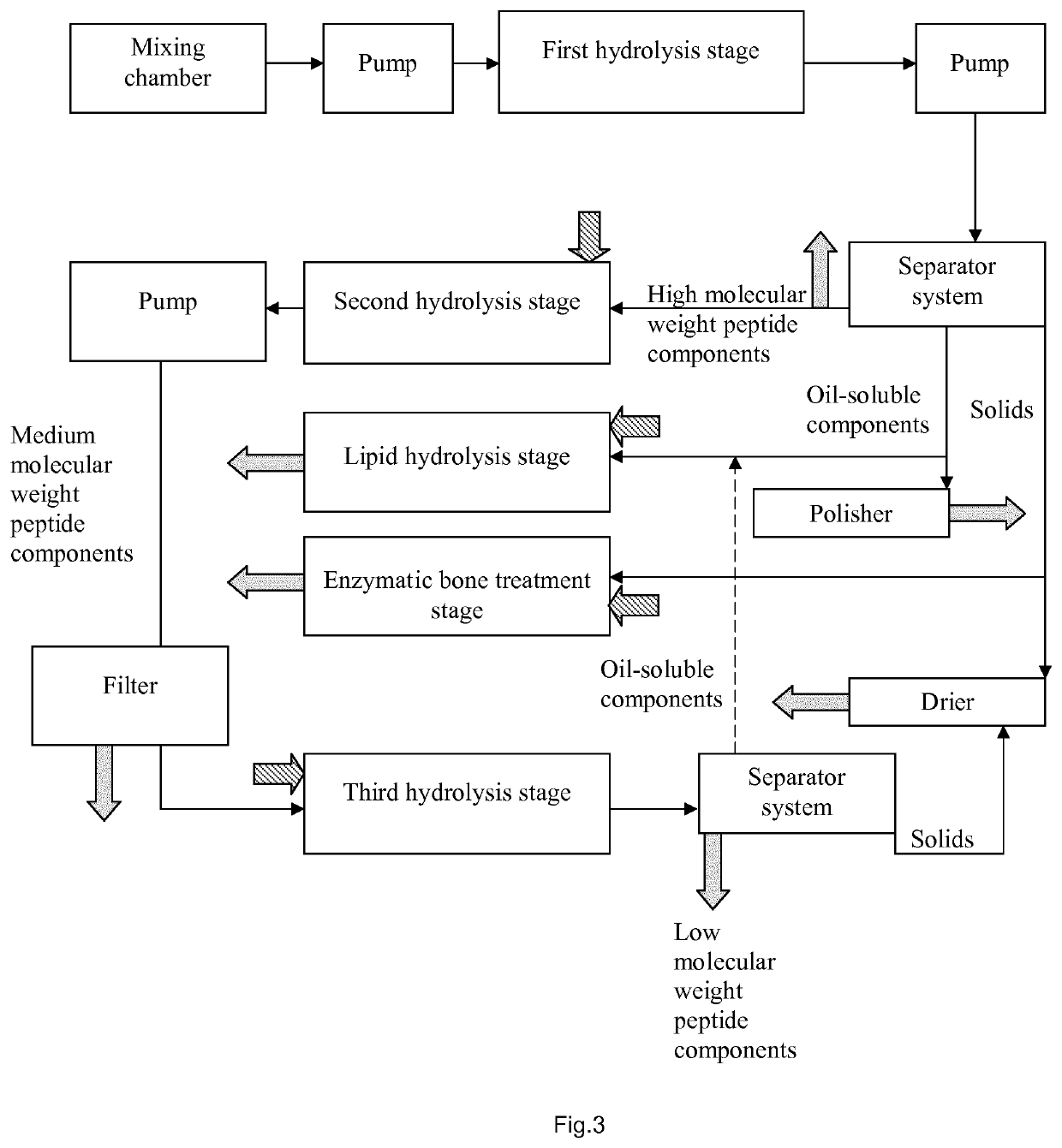Enzymatic processing plant and method of enzymatic processing
- Summary
- Abstract
- Description
- Claims
- Application Information
AI Technical Summary
Benefits of technology
Problems solved by technology
Method used
Image
Examples
example hydrolysis process 1
[0143]The process uses whole sardines (anchovy) with Alcalase (Novozymes), ground through 6 mm dyes, a raw material / water ratio 50 / 50 (w / w), and a reaction temperature 60° C. Targeted % DH=17 (% DH=number of peptide bonds cleaved / total number of peptide bonds), estimated reaction time 45 minutes based on info from the enzyme manufacturer. The enzyme added is 0.1% (d.w) of raw material (w.w) excluding added water. The plant is operated with a capacity 7 MT per hour, of which 3.5 MT of fish and 3.5 MT of water. The tube length will be 863 m.
[0144]Supplementary information: In this case no large bone particles are present, and thus the risk of clogging due to sedimentation of hard particles is low. The whole length of the tube is of similar shape and diameter throughout, although viscosity decreases down the line. A boost pump is fitted in ⅓ the length from the inlet as a safety guard towards clogging. The concentration of peptides increases with time as protein hydrolysis goes on. Pep...
example hydrolysis process 2
[0149]This example uses heads and backbones from salmon to be hydrolysed using Protamex (Novozymes). The enzyme concentration is 0.1% (d.w) of raw material (w.w). The raw material undergoes grinding through 6 mm dyes, and is mixed in a ratio of raw material / water 50 / 50 (w / w), before being processed at a reaction temperature of 50° C. The targeted degree of hydrolysis % DH=10 (% DH=number of peptide bonds cleaved / total number of peptide bonds), and the estimated reaction time 30 minutes based on information from the enzyme manufacturer.
Supplementary information: In this case where large bone particles are present the optimal configuration of the hydrolysis unit is a first part (⅓) where there is less risk of sedimentation of the bone particles resulting in a clogged tube—due to relative high viscosity. As process runs then the viscosity declines increasing the risk of clogging. Therefore, in this embodiment the hydrolysis unit is constructed by means of three different tube diameters...
example hydrolysis process 3
[0155]In this case hydrolysate processed from salmon frames and heads by means of Alcalase (Novozymes) is further processed through a secondary hydrolysis using Flavourzyme (Novozymes) which is an exopeptidase / endopeptidase complex specially designed to optimize taste and reduce bitterness. The hydrolysate was diluted to contain 10% dry matter, of which protein is the major part (approx. 90%). The substrate contains virtually no lipids. The reaction time is 20 minutes and the reaction temperature 55° C. The enzyme concentration is 0.1% (d.w) of raw material (w.w).
Supplementary information: In this case the substrate is a free-flowing liquid with no particles nor lipids are present, and thus there is no risk of clogging or formation of emulsions. Viscosity is low throughout the process tube, which is of similar construction throughout.
The following exemplary calculation uses values for the parameters which may be typical of a working system:
Reaction Mixture Properties:
[0156]Density ρ...
PUM
| Property | Measurement | Unit |
|---|---|---|
| Length | aaaaa | aaaaa |
| Length | aaaaa | aaaaa |
| Length | aaaaa | aaaaa |
Abstract
Description
Claims
Application Information
 Login to View More
Login to View More - R&D
- Intellectual Property
- Life Sciences
- Materials
- Tech Scout
- Unparalleled Data Quality
- Higher Quality Content
- 60% Fewer Hallucinations
Browse by: Latest US Patents, China's latest patents, Technical Efficacy Thesaurus, Application Domain, Technology Topic, Popular Technical Reports.
© 2025 PatSnap. All rights reserved.Legal|Privacy policy|Modern Slavery Act Transparency Statement|Sitemap|About US| Contact US: help@patsnap.com



